Spiderman and Spider plants, both have been named after the spider insect. The former has been named because of throwing webs, while the latter has been named due to its spidery leaves that dangle down from the plant.
Today you’ll get to know all the details about this wonderful, adaptable, and easy-to-grow plant.
More...
What is a Spider Plant?
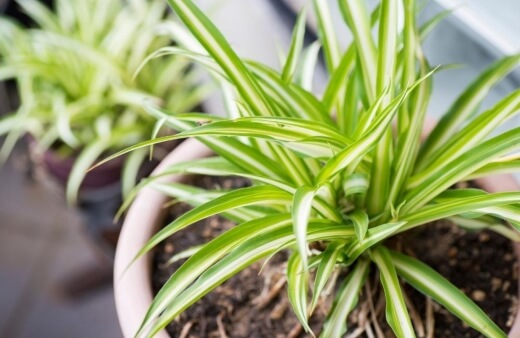
The Latin name of the Spider plant is Chlorophytum comosum. It is also known as spider ivy and ribbon plant. This plant is native to coastal areas of South Africa but has become popular in other parts of the globe, including Western Australia.
The best time to grow them is in the season of spring and summer. They grow well at room temperature which makes them a perfect indoor plant.
It can grow 2-3 feet long and 2-4 feet wide. The time it takes to grow full-size spider ivy is 5 to 10 years.
Spider Plant Varieties
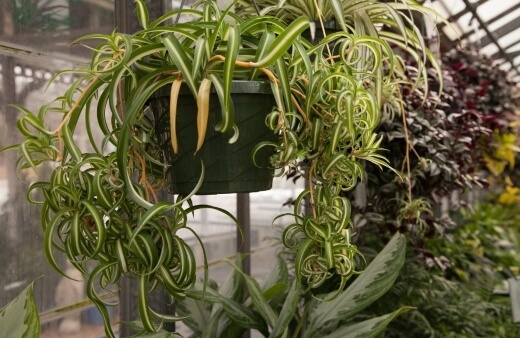
Just like other plants, they also have some amazing varieties. Let’s discuss a few of them.
- Bonnie Spider Plant. They are known for their curvy and twisty leaves.
- Hawaiian Spider Plant. This plant variety is unique in its own way. It has variegation on its new leaves. The variegation on older leaves, However, fades and this gives the plant a new vibrant colorful look.
- Variegated Bonnie Spider Plant. This plant type has curly green leaves with white creamy stripes.
- Zebra Grass Spider Plant. Staying true to its name, it has white edged green leaves.
Who doesn’t like to have a companion? Chlorophytum comosum grows well alongside ferns, Dracaena and ZZ plants. These companion plants complement it nicely.
Ribbon Plant Special Features
It has long narrow grassy green leaves with white or ivory stripes. The spider-like foliage is the reason it is called spider plant. It also grows tiny white flowers but not always.
The best use of this plant is as an air cleaner. It removes perilous toxins from the air and the moisture produced by them can raise the room’s humidity up to 5% easily.
How to Grow Spider Plant
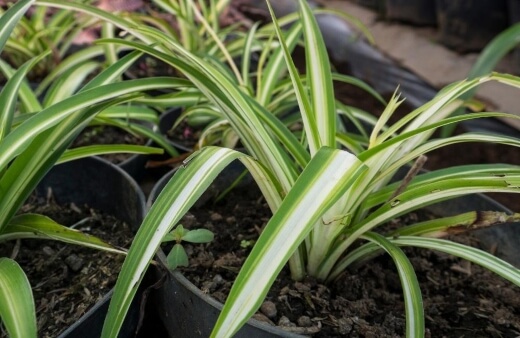
Chlorophytum comosum seed germination takes a couple of weeks so don’t lose your patience. First step is to buy the spider plant seed and plant it right away. This is because it doesn’t store well and can become wasteful if not planted immediately.
Sow the seeds half inch deep in a potting with a good mix. Keep them warm and maintain a strict watering routine in the required manner. Provide them indirect sunlight and maintain moist soil to help them grow. As mentioned above, they will take considerable time to bloom.
How to Propagate Spider Plant
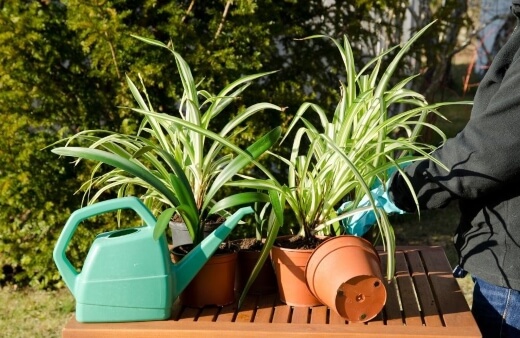
As the seeds don’t store well, you probably won’t find them in local nurseries in your Australian hometown. Instead, you should propagate it from its offshoot. This is an easy, inexpensive and relatively faster method to grow spider ivy.
To start propagating spider plant, fill a jar with clean water, and place the spider plant cutting into it. Keep it in indirect sunlight and change the water when it gets cloudy. Wait for the roots to develop and form a good grouping of them.


Get Your Free Guide:
Master Growing Australian Natives eBook
A Must Have Complete Guide for Every Australian Garden
Get Your Free Guide:
Master Growing Australian Natives eBook
A Must Have Complete Guide for Every Australian Garden
Once this is done, it is time to place the new spider ivy into a soilless seed starting mix and making a hole through pencil or stick deep enough to accommodate the placement of its roots.
Place the plant as deep as the roots and cover it with soil. Now water the soil and keep it in indirect sunlight to start its growth.
Caring for Spider Plant

Caring for Spider plant is easy and while it can forgive a lot of your mistakes, it still requires some care. These things include keeping them at a place where average room temperature and humidity is maintained, and indirect sunlight is reaching the plant.
There are a couple more protocols to be maintained and if followed, your plant is bound to grow well.
Soil
Plant them in a well-draining soil and make sure to keep the soil moist to allow their growth.
Fertiliser
They do appreciate fertilisers as it helps them nourish and grow better. When buying a fertiliser for them, go for a general-purpose fertiliser for indoor plants.
Fertilise them twice a month during the growing seasons of summer and spring. Avoid overdoing it, as more fertiliser can also harm the plant.
Also see: Complete Australian Garden Fertiliser Users Guide
Watering Ribbon Plant
Water Chlorophytum comosum once a week but make sure the soil is dry before watering it. If it’s still moist then delay the watering by a day.
Pruning Spider Plant
Pruning is a great way to manage your plant and restrict it to a preferable size while also rejuvenating its health in the process. You can prune your plant by removing dead, diseased or discolored foliage and by cutting the foliage at the base of the plant.
Spider Ivy Pests and Diseases
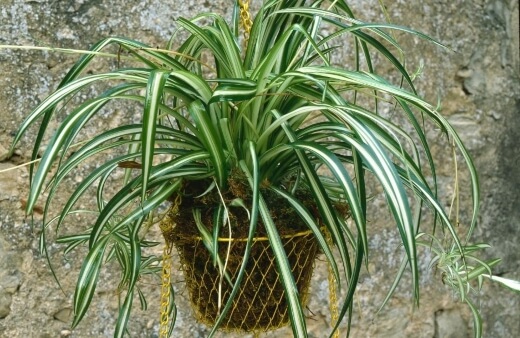
There are two kinds of diseases that usually occur in these plants. They are known as fungal leaf rot and fungal root rot. They are usually caused due to excess watering or a soil that doesn’t drain well.
The disease can be traced down to more such careless actions on our end like using tap water, putting too much fertiliser. As you can infer, these diseases are inflicted more due to controllable factors that are in our hand.
The best way to heal your plant is to repot it in a new clean and sterile pot. Repotting solves the majority of these issues and you’ll soon have a healthy plant at your disposal.
Once you re-pot it, make sure you follow its care protocols such as indirect sunlight, good airflow, well-draining soil, and watering routine to ensure it stays healthy and evolves into its best form.
Another way to stay away from overwatering issues is to mist your plant. This boosts the humidity of your plants and helps it flourish. The fungus disease can also be treated using fungicide.
These plants are tough and resistant towards pests but they can still fall prey to a few pest infestations. This includes Aphids, mealybugs, Whitefield and spider mites. These pests are dangerous to your plant as they can eat it.
A sticky spider plant is an indication of the pests. Hurry in counteracting them. The longer they stay, the more harm they can do.
There are three natural ways to get rid of these pests without harming the plant in the process. First is to mix rubbing alcohol and water, and spray it on leaves. This will easily kill the mites.
Second and third ways involve using soap and neem oil respectively. Soap will suffocate the mites and kill them without causing any harm to your plant.
Ribbon Plant Common Problems/Tips
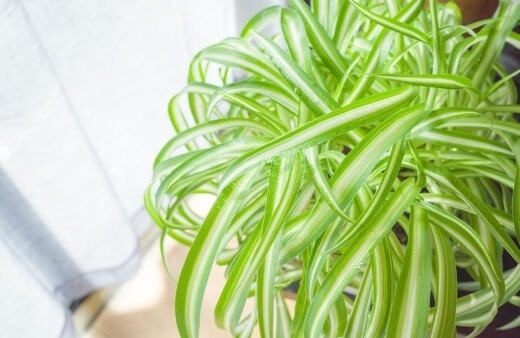
While this plant is easy to care for and can grow well under minimal care and condition, you still need to look out for these common mistakes that people tend to make so you avoid those.
- Too much or too little water, both are harmful for the plant. Overwatering can cause the leaves to turn black or dark brown
- Keep the Chlorophytum comosum away from kids and pets. While these are considered non-toxic, Ribbon plant still contain chemicals related to opium that can probably upset your stomach or cause vomiting and diarrhea if swallowed.
- Brown tips of the plant can not cause any trouble so it is up to you to cut it off or keep it intact. They are just dead tissues on the plant.
- Avoid keeping it in direct sunlight as this cause sunburn to the plant, resulting in leaves turning brown
- They are sensitive to chemicals in tap water so avoid watering them through tap water. The chlorine and other such chemicals can damage the plant. Go for rain water or filtered water instead.
Spider Plant FAQ
Here are some commonly asked questions about spider ivy.
Why is My Plant Turning Yellow?
The yellow color indicates the excess of minerals, fertiliser, or the lack of indirect sunlight.
Can I Cut Brown Tips Off My Plant?
Yes you can if you want to but they do not cause any harm to the plant in itself. They are just dead tissues that have dried off and for maintenance purposes, you can totally remove them.
What is the Best Fertiliser for My Chlorophytum comosum?
An all purpose fertiliser works best for this plant. However, avoid over fertilising it as leaves will turn brown as a result.
Wrapping Up Our Spider Plant Growing Guide
Spider plants are wonderful houseplants and are widely popular throughout Australia. They can be one of the best decorations at your home. Their presence can purify the home air and increase humidity.
They are easy to care for and only require a few things to grow effortlessly. This includes good airflow, well-draining and moist soil, and indirect sunlight.
They rarely catch pests but if they do, you can treat them by using natural methods like using rubbing alcohol plus water solution, neem oil or dishwashing soap to kill these mites.
Is there anything left to say? Go purchase your spider plant today and reap the benefits.

Published on January 6, 2022 by Maisie Blevins
Last Updated on February 11, 2025




